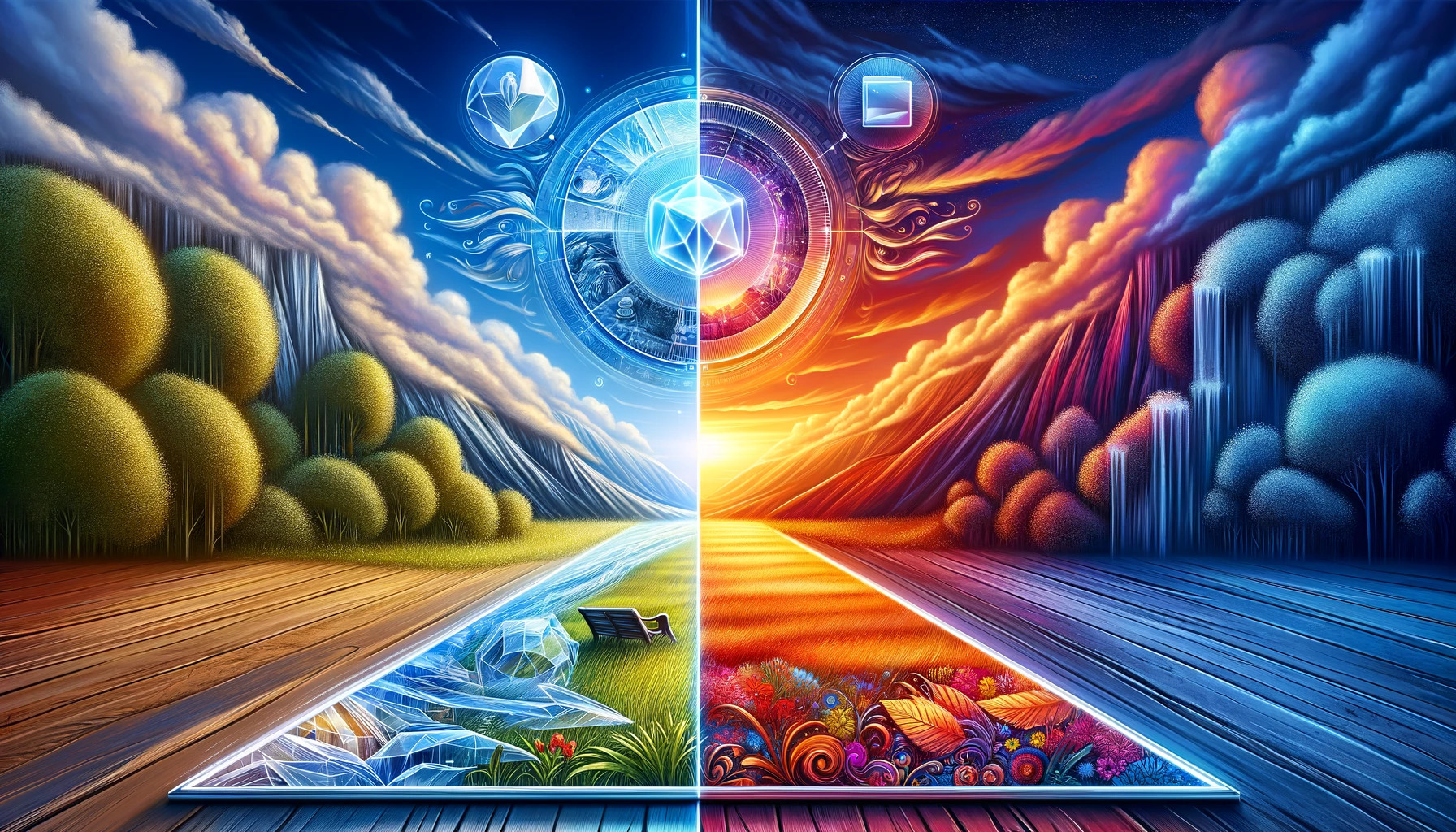PNG vs. JPEG: Which Format to Use and When
By Marshall
Published March 22, 2024
 PNG vs. JPEG: Which Format to Use and When
PNG vs. JPEG: Which Format to Use and When
In the vibrant world of digital imagery, PNG and JPEG stand as titans, each with unique strengths tailored to different needs and outcomes. Understanding the essence of PNG features alongside JPEG's capabilities allows one to navigate the digital landscape with precision, ensuring that each image serves its intended purpose flawlessly. This article dives deep into the characteristics, applications, and situational best uses of these formats, providing a clear guide on when to deploy each.
The Essence of JPEG
JPEG, an acronym for Joint Photographic Experts Group, is a method primarily used for digital photography. It shines due to its ability to compress file sizes significantly, making it the go-to format for sharing images across the bandwidth-conscious internet. However, this compression comes at a cost – it's lossy, meaning some original image quality is sacrificed for the sake of smaller file sizes. This characteristic makes JPEG ideal for:
- Web Photography: Its compression efficiency ensures websites load quickly, enhancing user experience.
- Email Attachments: Smaller file sizes mean faster sending and receiving times.
- Printing Services: Despite compression, high-resolution JPEGs maintain sufficient quality for various print formats.
JPEG's widespread compatibility across devices and platforms further cements its status as the ubiquitous choice for everyday photography.
The Brilliance of PNG
PNG (Portable Network Graphics) offers a rich palette of PNG features, setting it apart in scenarios where image quality cannot be compromised. It uses lossless compression, meaning every detail of the original image is preserved, albeit often at the cost of larger file sizes compared to JPEG.
A standout trait of PNG is its support for PNG transparency, allowing for seamless overlaying on different backgrounds without the jagged, boxy edges typical of JPEGs. This feature is invaluable in graphic design, particularly for logos, icons, and web graphics where precision and detail are paramount.
When to Use PNG
When to use PNG is dictated by its strengths. It excels in:
- Transparency Needs: PNG allows for transparent backgrounds, crucial for logos, icons, or any graphic meant to be placed over varying backgrounds.
- Complex Graphics: With its lossless compression, PNG is perfect for detailed illustrations, graphics, and texts, preserving sharpness and clarity.
- Screenshots and Web Graphics: The crispness provided by PNG makes it a go-to for screenshots and UI elements, ensuring readability and precision.
- Digital Art and Illustrations: Artists and designers often prefer PNG for its ability to precisely capture the nuances of digital artworks without quality loss.
Despite its advantages, PNG limitations include larger file sizes and sometimes lesser compatibility with older web platforms. This makes it less suitable for general photography or instances where bandwidth is a concern.
When to Use JPEG
- Photography: JPEG's strength lies in its ability to handle complex color gradients and subtle variations found in photographs, all while keeping file sizes manageable.
- Web Images: For images on websites where loading speed is crucial, JPEG's efficient compression allows for a swift user experience without a significant sacrifice in visual quality.
- Email Attachments and Online Sharing: Given its smaller file size, JPEG is ideal for sending images via email or uploading to social media, balancing quality and upload/download speeds.
- Print Media: While high-resolution PNGs are also print-worthy, JPEG files are often used in print media when the balance between quality and file size is considered.
Key Differences to Remember
- Compression: JPEG uses lossy compression, reducing file size but at the cost of some quality. PNG employs lossless compression, preserving original image quality at the expense of larger file sizes.
- Color and Transparency: PNG supports a broader range of colors and transparency, making it suitable for more complex images and graphics. JPEG, while capable of displaying millions of colors, does not support transparency.
- File Size: JPEG files are generally smaller than PNG files, making them more efficient for web use and storage where limitations exist.
- Usage Scenarios: Choose JPEG for natural scenes and photographs where file size matters. Opt for PNG when dealing with graphics, texts, screenshots, or any content where clarity and detail are non-negotiable.
Balancing Act: Quality vs. Efficiency
Selecting between PNG and JPEG often comes down to a balance between image quality and file size efficiency. For web developers, graphic designers, and photographers alike, understanding the strengths and limitations of each format is key to optimizing your digital content for its intended purpose.
- For Web Use: Prioritize JPEG for most photographs to enhance loading times. Use PNG for logos, icons, and when transparency is needed.
- For Print: Both formats can be suitable for print, but consider the end use. JPEGs are typically used for photos in magazines and books, while PNGs are preferred for detailed graphics in brochures and flyers.
- For Digital Art: PNG is the superior choice for digital art and illustrations due to its lossless compression and support for a wide color range.
Conclusion
In the digital age, images communicate, persuade, and inform. Selecting the correct format between PNG and JPEG hinges on understanding the unique PNG features, the practicality of JPEG's compression, and the specific needs of your project. Whether it's the unparalleled detail and transparency of PNG or the efficient, broad compatibility of JPEG, each format has its realm where it shines the brightest. By harnessing the strengths of each according to the situation at hand, one can ensure that their digital imagery not only captures attention but also conveys the intended message with clarity and impact.